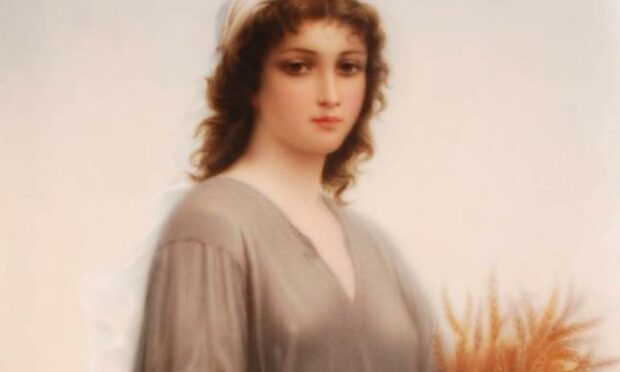Lindsay Burns staged a pre-Christmas three-day auction, and today’s offering is one of many stand-out items from the Perth sale.
It is a late 19th Century KPM Berlin porcelain plaque decorated with ‘Ruth in the Cornfield’.
The famous royal porcelain factory in Berlin (KPM), established in 1763, also produced some of the greatest painting ever accomplished.
Delicacy and shimmering beauty
To explain, the process of painting on fine porcelain offered a remarkable delicacy of quality and pin-sharpishness (new word for 2022!) that oil on canvas couldn’t hold a candle to.
Today, the best are eagerly collected for their shimmering artistry and beauty.
Such biblical subjects as this image of Ruth from the Old Testament were enormously popular in Europe during the second half of the 19th Century.
Most scenes were copied from well-known contemporary oil paintings.
This 12 x 8 inches, three-quarter-length portrait follows that template.
Painted by a Viennese portraitist
It was painted around 1890 by R. Dittrich after a painting by the French artist Charles Landelle, who specialised in sentimental religious scenes.
Dittrich, I believe, was a china portraitist based in Vienna while Landelle’s original painting is now in the Shipley Art Gallery, Gateshead.
Ruth appears around 1100 BC and is always represented with sheaves of corn.
She symbolises courage, diligence, reliability, perseverance and wisdom.
She wears a traditional costume with head veil and attentively looks at the viewer.
She is holding a sheaf of corn on her left arm, in her right some single grains.
The background is formed by a cornfield and seascape.
I have records of this edition selling for between £300 to £3000.
The example in Perth was hammered down for £880.


